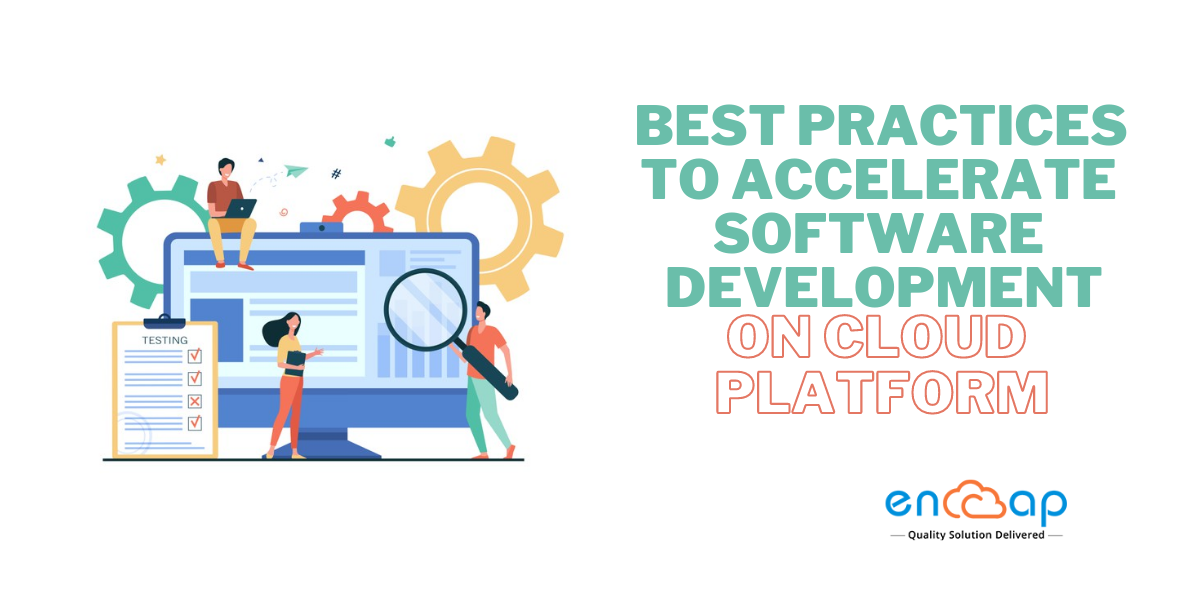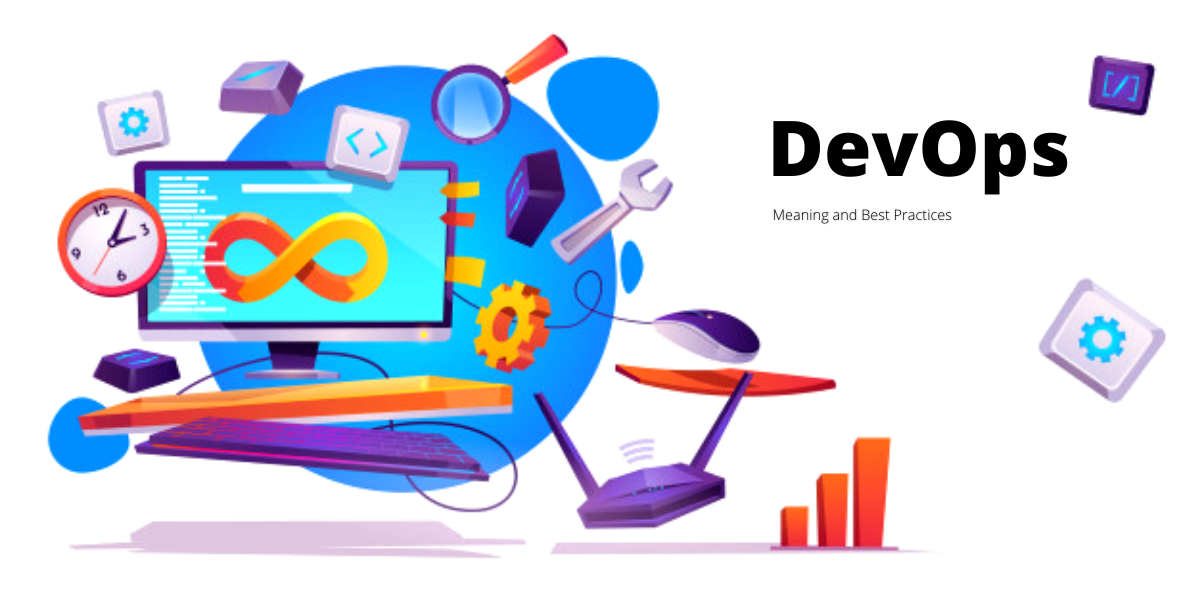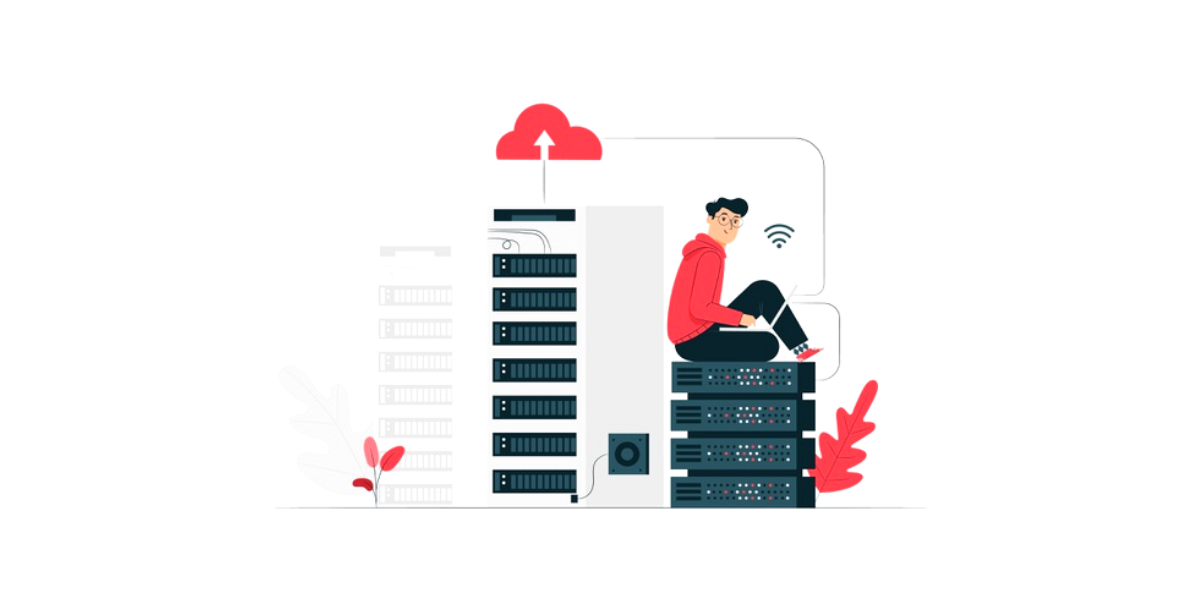Best Practices to Accelerate Software Development on Cloud Platform
Organizations have the option of accelerating the speed of software development on the cloud platform by combining DevOps with cloud architecture and by adopting agile development methods. With just understanding the process to accelerate development in the cloud, some of the pressing challenges can be prevented altogether while making the job of software developers much easier.
Even though there are many benefits of switching to a cloud-first model, the most immediate and beneficial ones can be accelerated development and testing. Some of the typical roadblocks faced by the software engineers can be solved by only equipping developers with the right tools for the task.
In this blog, we will have a detailed look at the best practice that can be adopted for accelerating the software development process on the cloud platform.
However, before anything, we will understand more about DevOps.
Table of Contents
What Is DevOps?
DevOps explains the relationship between software development and IT operation teams. It is essentially a well-defined method that can help both the teams to collaborate in a better way. Traditionally, the operations team and the software development team push each other in different directions which delays the processes.
Where the development team is focused on delivering new features to end-users, the operations team is more focused on reducing the risks and liabilities and streamlining performance. With the implementation of DevOps, this problem is reduced considerably because all the processes are streamlined entirely.
DevOps Practice
DevOps and the implementation of it have been increasing in importance over the last decade and have in fact gone through many repetitions as well. In the most fundamental form, DevOps and cloud are all about enabling a software team to swiftly and securely accelerate their services for running the company’s development and testing.
In large organizations, the process of software development comes with many stages and ranges over a prolonged time period and communication gaps that slow things down.
However, with the introduction all the processes become streamlined. With the help of development on the cloud, it becomes possible to eliminate multiple limitations that otherwise come in the application lifecycle.
There is no need for the software engineering team to stop working or wait for a request to be processed further. This is because there are many ways to overcome this automation process, but in my opinion, the use of the cloud is one of the most proven ways.
Some of the best practices that can be used for enhancing the speed of software development on the cloud platform are:
1. In-depth Knowledge Of Cloud Computing and DevOps
Many people implement DevOps in cloud computing for the purpose of staying in line with technological changes. However, only some of them actually get to the root of understanding the benefits of it in the true sense.
It is very important to move ahead as the world advances and in terms of technology, this becomes all the more relevant. In-depth knowledge of cloud computing and DevOps can lead to a better understanding and in result quick acceptance.
Hence, it is only relevant that some of the important players within the organization participate in the cloud and DevOps training so that a detailed mentoring can be offered as well. Either the team can be told to do something in a certain way or it can be shown and when it comes to gaining knowledge of new technology, it is best to do it first.
2. Don’t Be Restricted To Performance Only
The performance problems can create a limitation in the process of software development while creating situations that did not even exist before. Within an organization, data moves across multiple data centres and travels far.
As the information moves and the systems are faced with network problems, latency, or network pipes, applications are supposed to be constructed in a way that they become sufficient as wide area network resources on every step. This challenge becomes particularly troublesome with the public cloud because customers do not control the size of the pipe coming into the provider’s site.
The thing with cloud computing is that it runs on numerous servers and in some of the extremely large data centres. All developers must be aware of and design while keeping the potential lag time in mind while the information flows on the web, data, and application servers.
Besides this, computers can run in modes that can affect performance. The application design should account for potential server load for making sure that the system is contingent on the service level agreement objectives.
3. Security Is Important
It is pretty normal for the security models to keep changing in the cloud every now and then. The cloud is in fact known for employing identity-based security models and technologies. However, one must learn to extend the benefits of security to the DevOps tools and organizations at the same time.
Ensuring security must be made an important part of the automated testing. It should be built into continuous integration and continuous deployment processes such as those that move to the cloud-based platform.
If a person can afford it then hiring or appointing a security officer responsible for managing the security within DevOps in the cloud can be helpful.
4. Choosing DevOps Tools That Work With Cloud
It must be acknowledged that the DevOps tools are available on-demand, on-premise or they are part of a larger public cloud platform. At the time of selecting tools, most people prefer being restricted to just one cloud platform.
While taking the cloud consulting services, it is best to not be restricted to just one cloud platform. In the long run, it always pays well to get the applications deployed on many different clouds.
This way, one can pick and select the best cloud computing options to do the job. One must not limit his/her choices to make sure that the best advantages are availed.
5. Services and Resource Streamlining
A proper management or streamlining of resources gets overlooked very often when it comes to DevOps and cloud computing. This mostly happens when the number of services, APIs and resources keep growing until a point that it becomes too difficult to manage everything.
This number is reliant on the kind of services and resources under the management but it is possible to hit it during the first year of operations with DevOps in the cloud. To ensure the right management of services and resources, it is important to build a governance infrastructure much before you need it.
These are the tools that differ in features and functions but also offer services and resource directory that is the reason for streamlined management. The best thing is that these tools offer a place for creating policies that govern the leveraging of services like the times and data that can be accessed and so on.
6. Cloud Transformation
It is a common belief within many organizations that DevOps and cloud are able to save the organization money and that can, in turn, be used for funding the transformation. This kind of budgeting might make the overall impact of the annual IT budget simple to manage.
However, this method is not applicable to get the DevOps and cloud projects off the ground which means that the project can fail as well. The fact of the matter is that DevOps in the cloud is suitable for offering the projected cost savings that are needed for investing during the initial years.
Where the normal operations are ongoing, the DevOps and cloud computing projects must be functioning independently for some time. This enables the entire cloud approaches and technologies to prove their worth and understand everything before phasing into production.
7. Using Containers
The use of containers provides a way to put the applications in application components so that they become portable and are easily managed. The developers must integrate the containers in the DevOps as a reliable cloud strategy.
It is always best to spend a significant amount of time with the technology for understanding what works and what does not while targeting the right use of technologies. In addition, one must always be sure to think about factors such as governance, security, orchestration, and cluster management as part of a platform that leverages the containers.
This does not mean that the containers will be suitable for the way an application is built and deployed. It means that one must consider the value of application architecture, the standards, and enabling technology so that no possible value is missed in the technology.
8. Applications Must Be Cloud-Native
For taking maximum benefit of the cloud platform based on the infrastructure as a service and the platform as a service model, it is necessary to design applications in a way that they are decoupled from any physical resources.
The cloud can definitely offer an abstraction or a virtualization layer between the application and the physical resources irrespective of whether they are designed or not. However, that is not good enough.
When a decoupled architecture is considered in the design, it becomes important to understand the efficacy of the software development and deployment stages along with the utilization of the cloud resources.
The efficiency of cloud computing is beneficial for saving money because an organization is only eligible to pay for resources that are being used. This makes the applications run faster and generate small cloud service bills at the end of the month.
Conclusion
All organizations that wish to reduce the application development time must use the cloud platforms. Adopting a cloud-first approach for development requires companies to evaluate any unneeded assumptions. All traditional processes get replaced with a committed IT department.
Choosing a cloud requires the developers to increase their skill set and understand the cloud so that the competency to include the fundamental IT processes can be expanded. The best part is that with the assistance of expert cloud consulting services, this becomes easy and possible.
If you also wish to pay more attention to the cloud-first approach while putting into practice, companies such as Encaptechno can be extremely helpful for getting expert cloud consultation.








No comments